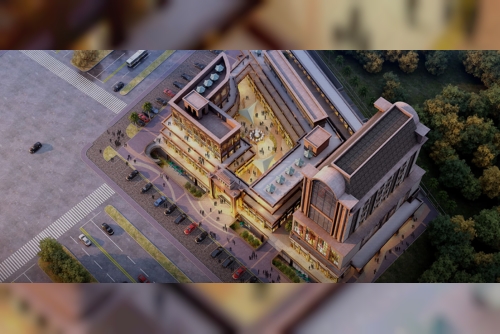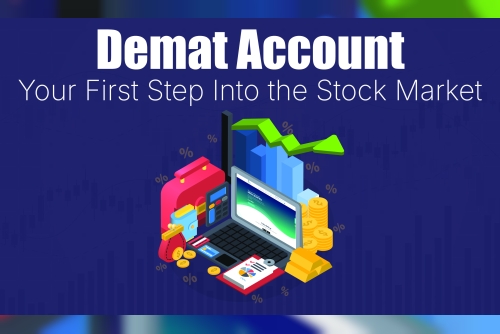Technology is changing rapidly in the digital world and the Internet of Things (IoT) and 5G technologies are witnessed on the cusp of revolution. Together, these innovations are helping to achieve exponential leaps in multi-service app possibilities with immediate real-time data /connection facilitation and user convenience. This blog covers IoT, 5G opportunities in multires, and the role of both and how they will influence the future. On-demand multi-service app development can help you build a cutting-edge app that meets the needs of modern customers and sets your business apart from the competition.
Understanding IoT and 5GWhat is IoT?
IoT is the concept that primarily consists of a large number of inter-connected machines that gather, send, and analyze data in a real way. These devices include wristband fitness monitors, household devices, and manufacturing sensors among others. The Internet of Things (IoT) optimizes various activities and offers temporal and spatial information for various industries and the general population.
What is 5G?5G is the new generation of cellular mobile communication as well as technology, which is faster, has less latency, and better connection than earlier generations. Whilst peak download speeds are in the range of 10 Gbps and latency ranges from 1 to 10 milliseconds, 5G is envisioned to handle tens of billions of connected devices.
Analyzing the Connection between IoT and 5G
When IoT and 5G are combined, there is an even greater environment that serves to increase the efficiency of multi-service apps. Here’s how they complement each other:
1. Ultra-Low Latencythe IoT devices need data from the environment to be processed in real-time based on real-life applications such as drivers-less vehicles and the health sector; 5G has very low latency to allow for quick decision making.
2. Massive Connectivity5G supports up to one million devices per square kilometer, addressing the scalability challenges of IoT networks. This capability is crucial for deploying IoT solutions in smart cities and industrial settings.
3. Enhanced BandwidthThe relative bandwidth for the 5G, enables such multi-service apps to accommodate large traffic that is produced by IoT devices. This leads to enhanced smoothness in playing a video, quicker downloads, as wells as secure communications.
4. Energy EfficiencyEnergy-efficient protocols of the 5G help to increase the battery life of various IoT devices thereby decreasing the cost of their maintenance and making it a more sustainable business.
Impact on Multi-Service Applications
The fusion of IoT and 5G is revolutionizing multi-service apps across various industries. Let’s explore some key areas:
1. Smart HomesSmart home devices including thermostats, security cameras, and voice assistants, connected by IoT are increasingly getting smarter due to the incorporation of 5G services.
Offer real-time control: Users can remotely manage their devices with minimal delays.
Enhance security: Real-time alerts and video feeds ensure better monitoring.
Optimize energy usage: Smart algorithms analyze data to reduce energy consumption.
2. HealthcareHealthcare applications are using IoT and 5G for the next generation of telehealth and remote patient care.
Remote surgeries: Through 5G networks surgeons can control robotic systems to execute operations.
Continuous monitoring: Wearable IoT devices collect, and transmit health information to physicians in detail to monitor the health status.
Improved diagnostics: Smart multi-service applications developed for connected IoT devices perform diagnostics based on data.
3. Autonomous VehiclesToday its way again transformed by the usage of IoT and 5G.
Vehicle-to-everything (V2X) communication: Real-time data exchange between automobiles, transportation infrastructures, and the public improves safety.
Navigation: Multi-service apps offer accurate location direction and the latest traffic information in detail.
Autonomy: 5G helps AVs for real-time decision-making as well as for communication and coordination among them.
4. Smart CitiesIoT and 5G are basic to the creation of smart cities, serving as conduit structures and offering efficient resource management.
Traffic management: Many apps are built for handling multiple services where the data coming from sensors helps in managing the traffic efficiently and cutting off congestion.
Public safety: Constant monitoring and emergency response systems make security a bit better.
Waste management: Smart bins use IoT to optimize collection and disposal while intelligent applications for waste management.
5. Industrial AutomationIn the manufacturing industry, the IoT and 5G offer Industry 4.0 integration and reap cost and quality benefits.
Predictive maintenance: Assets have IoT sensors that track their condition, while applications give signals that an asset requires servicing.
Supply chain optimization: Real-time tracking of the goods helps in the overall management of logistics.
Robotics: Amount of bandwidth that can be applied in industrial robots to perform the correct movement.
Challenges and Solutions to IoT & 5G Integration
Despite their potential, integrating IoT and 5G into multi-service apps comes with challenges:
1. Data Security and PrivacyChallenge: Perhaps one of the biggest threats of IoT devices is an enormous amount of data which is created and can be accessible to hackers.
Solution: The following are measures that may be taken to reduce the risk: Strong application layer encryption, safe authentication process, and timely update of Application Software.
2. InteroperabilityChallenge: IoT devices often use different communication standards, complicating integration.
Solution: Adopting universal standards and APIs ensures seamless interoperability between devices and apps.
3. Infrastructure CostsChallenge: Deploying 5G infrastructure and IoT networks can be expensive.
Solution: Governments and private sectors can collaborate to share costs and develop public-private partnerships.
4. Scalability IssuesChallenge: Managing a growing number of connected devices can strain networks.
Solution: Leveraging edge computing and cloud solutions can handle scalability effectively.
Future Trends in IoT and 5G Integration
The future of IoT and 5G integration promises even greater advancements in multi-service apps:
1. AI-Powered IoTRolling IoT with artificial intelligence will help apps make predictive decisions and perform tasks that are challenging to do manually.
2. Edge ComputingDecentralizing the processing of data will eliminate latency that is normally evident in IoT networks.
3. Blockchain for IoTThis technology will also improve the security of IoT networks alongside the overall flow of data and transactions.
4. 6G and BeyondWhen the transition from 5G to 6G happens, it is only expected that speed, latency, and connectivity will become even better support for multi-service apps.
Conclusion
The incorporation of IoT and 5G in multi-service applications has enabled multiple industries to thrive due to advanced opportunities. Whether in smart homes or healthcare, or self-driving cars and factory floors, this integration is giving real-time connectivity, enhanced efficiency, and better user engagement. IoT and 5G Opportunities Serving Decision Making IoT is an incredible system that helps tackle challenges in business applications, whether large or small scale and enhance breakthroughs in knowledge for making a better future.
In the future that means IoT and 5G can grow in ways that are beyond the current imagination. Those who invest in these today will be in a good position to be tomorrow’s market leaders in the digital economy.












